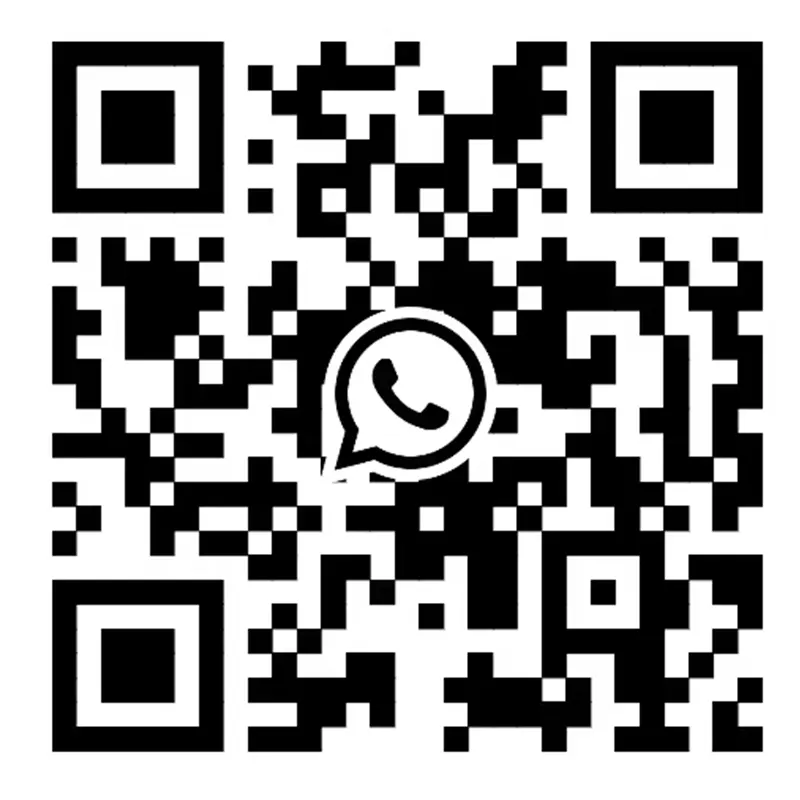Is baby diaper a good business
Yes. Disposable baby diapers are a high-repeat-purchase, rigid-demand FMCG category. Consumers are highly sensitive to safety, absorption, skin feel, and price; profitability is driven by brand power and channel efficiency. The global market is growing steadily, and Private Label and OEM/ODM models both have opportunities in Europe, North America, and emerging markets. Key risks include: raw-material price volatility (fluff pulp, SAP), rising channel costs, inventory and cash-flow pressure, me-too competition, and compliance barriers.
Market share (landscape at a glance)
- Global leaders: Pampers (P&G) and Huggies (Kimberly-Clark) retain leading shares in many countries; in Asia, Unicharm and Kao are strong; in Europe, retailer private labels take a large share, driving intense competition. Retail data indicate private label in Europe is approaching ~40% overall—fertile ground for diaper private labels.
- Structural shifts: Pull-up pants (pant style) keep gaining penetration; online outpaces offline; eco/bio-based and low-irritation lines are becoming key differentiation angles.
How big is the diaper market
- Global disposable baby diaper market (2024): ~US$78–79B; most firms expect mid-single-digit CAGR in the coming years.
- Adjacency: Reusable/cloth diapers are smaller but growing quickly—about US$2.65B in 2024, driven by sustainability and long-term cost.
Conclusion: It’s a stable, large, and clearly segmented market. New entrants who get positioning, cost, and channels right can find meaningful opportunities.
Diaper manufacturing cost (BOM & indicative ranges)
Per-piece references below use NB/S sizes as examples, FOB coastal China, excluding duties and logistics. Raw-material prices fluctuate. Ranges are for evaluation only and do not constitute a quote.
| Quality tier | Typical materials/process | Cost breakdown (%) | Reference cost / piece (USD) |
|---|---|---|---|
| Low (entry / promo lines) | Standard fluff pulp + basic SAP; conventional nonwoven; basic leak guards; straight tabs | Fluff pulp 28–32; SAP 18–22; Nonwovens 18–22; Elastic/Tapes 6–8; Adhesives 3–5; Packaging 3–5; Labor/Energy/Depreciation 10–12 | $0.045–0.070 |
| Mid (mainstream) | Higher SAP ratio; hot-air/pearl-embossed topsheet; triple leak guards; wider waist tabs | Fluff pulp 25–30; SAP 22–26; Nonwovens 20–24; Elastic/Tapes 7–9; Adhesives 3–5; Packaging 3–6; Labor/Energy/Depreciation 8–12 | $0.080–0.120 |
| High (flagship / low-irritation / eco) | High SAP content / composite core; ADL layer; ultra-soft skin-friendly or bio-based films; 3D leak guards | Fluff pulp 20–26; SAP 26–32; Nonwovens 22–26; Elastic/Tapes 8–10; Functional additives 2–4; Packaging 4–6; Labor/Energy/Depreciation 8–12 | $0.130–0.220 |
Core cost drivers: SAP/fluff prices, nonwoven/breathable film grade, core design, size (larger sizes cost more), yield, and line speed.
Contact us and we’ll build FOB price tiers by target market and configuration, plus landed cost & margin models.
How to start a disposable baby diaper business
I. Positioning & product mix
- Define your lane: value/volume, mid-tier reputation, premium low-irritation, eco-degradable, or niches (overnight, swim, preemie, etc.).
- Portfolio: lead with pull-ups + taped diapers; focus sizes S–XL (or 2–6) where sell-through is strongest.
- Compliance & testing: list required standards for your market (e.g., CPSIA/Prop 65, REACH, dermatological tests, optical brighteners/heavy metals/formaldehyde, etc.).
II. Channel selection
- Marketplaces (Amazon, Lazada, Shopee, eBay): asset-light, easy to test; costs = commission + ads; great for private-label cold starts.
- Own DTC site / social commerce: build data assets & subscriptions; requires ongoing content & growth loops.
- Local distribution systems: entry into mother-and-baby chains/supermarkets/drugstores; needs barcodes, supply price, shelf fees, and rebates.
- Small-batch online wholesaling: monthly rolling replenishment to control working capital.
- Tenders/group purchasing: hospitals, welfare institutions, retail-chain tenders; focus on on-time delivery & compliance; thinner margins but steady volume.
III. Finding manufacturers (OEM/ODM)
- RFQ essentials: target cost/size range/configs, monthly demand & ramp plan, custom molds/printing/packaging, QC & complaint loop.
- Sampling & pilots: 3–5 samples for A/B tests on absorption, re-wet, dryness backflow, side-leak, waist elasticity, and allergy feedback.
Where do most diapers come from
Using HS 961900 (covers baby diapers/sanitary napkins/tampons, etc.) for 2023 global exports: total value about US$18.2B. Major exporting countries/regions and approximate shares:
- China ~ US$2.93B (≈ 16%)
- Czechia ~ US$1.54B (≈ 8–9%)
- Germany ~ US$1.46B (≈ 8%)
- Others include Poland, Netherlands, Türkiye, Mexico, USA, Japan, etc. (category includes broader absorbent hygiene products).
China’s main industrial clusters (at a glance)
| Cluster | Traits & examples |
|---|---|
| Quanzhou, Fujian | Early full supply chain (fluff pulp/breathable films/nonwovens/SAP); rich in brands & OEMs; good for mid-to-high end + export. |
| Baoding, Hebei | High factory density, strong cost-effectiveness; suited to mid-low end & scale volumes. |
| Ningxiang, Hunan | Park-based with integrated chain; fast growth; good for differentiated/new brands. |
| Linyi, Shandong | Logistics advantages; multi-tier coverage. |
| Nantong, Jiangsu | Solid base + line upgrades; expanding into adult care/period pants; enables multi-category layout. |
How to become a diaper supplier
- Model: wholesale distribution / cross-border importer / private-label retail / hybrid (B2B + B2C).
- Access & compliance: trademarks & filings, GS1 barcodes, destination-market compliance (ingredient disclosure, derm tests, warnings/language labels).
- Supply chain: sign a Quality Agreement (QAA) and complaint/recall SOP; ensure batch traceability.
- Pricing system: SRP, channel pricing, promos & rebates, consignment/terms.
- MOQs & lead time: typical 20k–50k pcs per SKU per size; standard 25–45 days depending on lines & print slots.
- Logistics: FCL ocean (lowest cost), expedited vessels, or air (samples/stockout rescue).
- Growth playbook: launch cadence (season/occasion), membership & subscription, KOL/influencer seeding, hospital/pediatrics trials.
Product architecture & positioning (how to truly differentiate)
- Retail: reputation & repeat; structure SKUs around overnight high-absorbency, low-irritation/skin care, and ultra-thin & dry.
- Wholesale: stable supply, unified barcodes, standardized cartons & pallets; emphasize marginal cost & payment terms.
- Private label: brand story + packaging aesthetics + ingredient/testing claims; bundle baby wipes/changing pads to lift AOV.
- Deep niches: newborn ultra-thin, overnight super-absorbent, low-allergy, swim diapers, preemie, eco-degradable—build distinct claims and price bands.
How much does it cost to start a diaper business
Three common paths (indicative USD):
- Distributor / small-batch wholesale (private label or stock): $5k–$30k (initial inventory, barcodes, basic ads/materials).
- Importing a private label (OEM/ODM): $20k–$150k (samples & certifications $3k–$10k; first order 1–3 SKUs, 20k–60k pcs per SKU; ocean freight & duties; marketing).
- Building/buying a production line: per full-servo diaper line ~$0.5M–$1.2M+ (speed/config dependent) plus facility, utilities, lab, spares, labor, working capital; full setup commonly $3M–$8M+.
Line indicators: design 500–1000 pcs/min, stable 400–900 pcs/min. Yield and energy consumption significantly impact unit cost.
Sales channel selection: pros/cons & capital intensity
| Channel | Launch difficulty | Speed to results | Capital pressure (inventory/ads/rebates) | Gross-margin potential | Brand equity | Scale potential | Payment terms |
|---|---|---|---|---|---|---|---|
| Marketplaces (Amazon/Tmall/JD etc.) | Medium | Fast | Medium–High (fees + ads + fulfillment) | Medium | Medium (platform-centric) | High | T+7–30 days |
| Own site / DTC | Medium–High | Medium | Medium (paid traffic + small-batch stock) | High (lower channel fees) | High (own data) | Medium | Immediate/daily |
| Local distributors/retail chains | Medium | Medium | High (slotting, rebates, terms) | Medium | Medium | High (broad reach) | 30–90 days |
| Social commerce / live | Low–Medium | Very fast | Low–Medium (content/commissions/stock) | Medium–High | Medium | Medium (traffic volatility) | Fast (same day/week) |
| Tenders / group purchasing (institutions/hospitals/B2G) | High (qualifications) | Slow | Medium–High (testing/bids/stock) | Low–Medium | Low–Medium | High (stable big orders) | Slow (45–120 days) |
Notes: Capital pressure = ad intensity + first inventory + channel policies (rebates/barcodes/shelf fees). Gross-margin potential ≈ price headroom – channel fees – fulfillment. Payment terms shape cash turnover and replenishment cadence.
Per-channel highlights (brief)
- Marketplaces — Pros: built-in traffic, quick scaling, transparent rules, fast A/B testing. Cons: high ad burn, look-alike competition, platform rule swings. Best for fast PMF validation with rolling small-batch replenishment.
- Own DTC — Pros: margin & data ownership; subscriptions; brand asset building. Cons: tougher acquisition; media & content muscle required. Best for long-term brand builders.
- Local distribution — Pros: wide coverage, steady sell-through, regional momentum. Cons: capital tied up in listing & rebates; long terms; strict price discipline needed.
- Social/live — Pros: fast ramp; content = sales; enables hero SKUs. Cons: volatile traffic; complex creator deals; continuous content needed.
- Tenders/group purchasing — Pros: large, predictable POs; good for line ramp & cash planning. Cons: heavy qualification & price-driven; slower payments.
Budget & staging tips
- Small (≤$20k): marketplaces + social; use trial/travel packs; roll small batches; watch reviews/returns before scaling.
- Medium ($20k–$100k): marketplaces base + build DTC + pilot 1–2 regional distributors → test → build → scale.
- Large ($100k+): multi-channel + tender/healthcare qualifications → steady big orders hedge marketplace volatility and lift utilization.
FAQ
What is the most bought diaper size
It varies by market and channel, but across studies and retail practice, Sizes 3–4 typically dominate in both volume and time-in-use. Choose by baby weight and leak performance.
How expensive is a diaper
US retail examples (vary by region): Value/private-label jumbo packs can be ~$0.17/piece (Size 4 example); mainstream best-sellers commonly $0.25–0.35/piece; premium/eco lines $0.40+/piece.
How much should l pay per diaper
- Consumer view: out-the-door price ÷ pieces. Targets — value/private label: ≤$0.20–0.25/pc (larger sizes slightly higher); mainstream brands: $0.25–0.35/pc; premium/eco: $0.35–0.50+/pc.
- Business view: FOB + ocean/air + duties/VAT + inland + platform/channel fees = landed unit cost. Back-solve margin targets and promo room.
Do diapers expire if unopened
Unopened is best used within ~3 years of manufacture; after opening, aim to use within 12 months (avoid heat and humidity).


